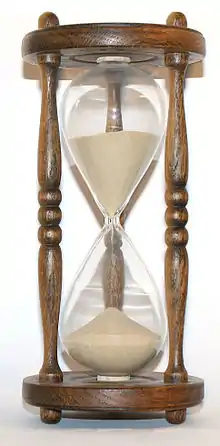Sidereal year
A sidereal year (UK: /saɪˈdɪəriəl/, US: /saɪˈdɪriəl, sə-/; from Latin sidus "asterism, star") is the time taken by the Earth to orbit the Sun once with respect to the fixed stars. Hence, it is also the time taken for the Sun to return to the same position with respect to the fixed stars after apparently travelling once around the ecliptic. It equals 365.256 363 004 Ephemeris days for the J2000.0 epoch.[1]
The sidereal year differs from the tropical year, "the period of time required for the ecliptic longitude of the Sun to increase 360 degrees",[2] due to the precession of the equinoxes. The sidereal year is 20 min 24.5 s longer than the mean tropical year at J2000.0 (365.242 190 402 ephemeris days).[1]
Before the discovery of the precession of the equinoxes by Hipparchus in the Hellenistic period, the difference between sidereal and tropical year was unknown. For naked-eye observation, the shift of the constellations relative to the equinoxes only becomes apparent over centuries or "ages", and pre-modern calendars such as Hesiod's Works and Days would give the times of the year for sowing, harvest, and so on by reference to the first visibility of stars, effectively using the sidereal year. The South and Southeast Asian solar New Year, based on Indic influences, is traditionally reckoned by the Sun's entry into Aries and thus the sidereal year, but is also supposed to align with the spring equinox and have relevance to the harvesting and planting season and thus the tropical year. As these have grown apart, in some countries and cultures the date has been fixed according to the tropical year while in others the astronomical calculation and sidereal year is still used.
See also
| Look up sidereal year in Wiktionary, the free dictionary. |
Works cited
- "Glossary". Astronomical Almanac for the Year 2017. Washington, D.C. and London: United States Naval Observatory, HM Nautical Almanac Office. 2016. p. M19.
- "Useful Constants". International Earth rotation and Reference systems Service (IERS). February 13, 2014. Retrieved February 29, 2020.


